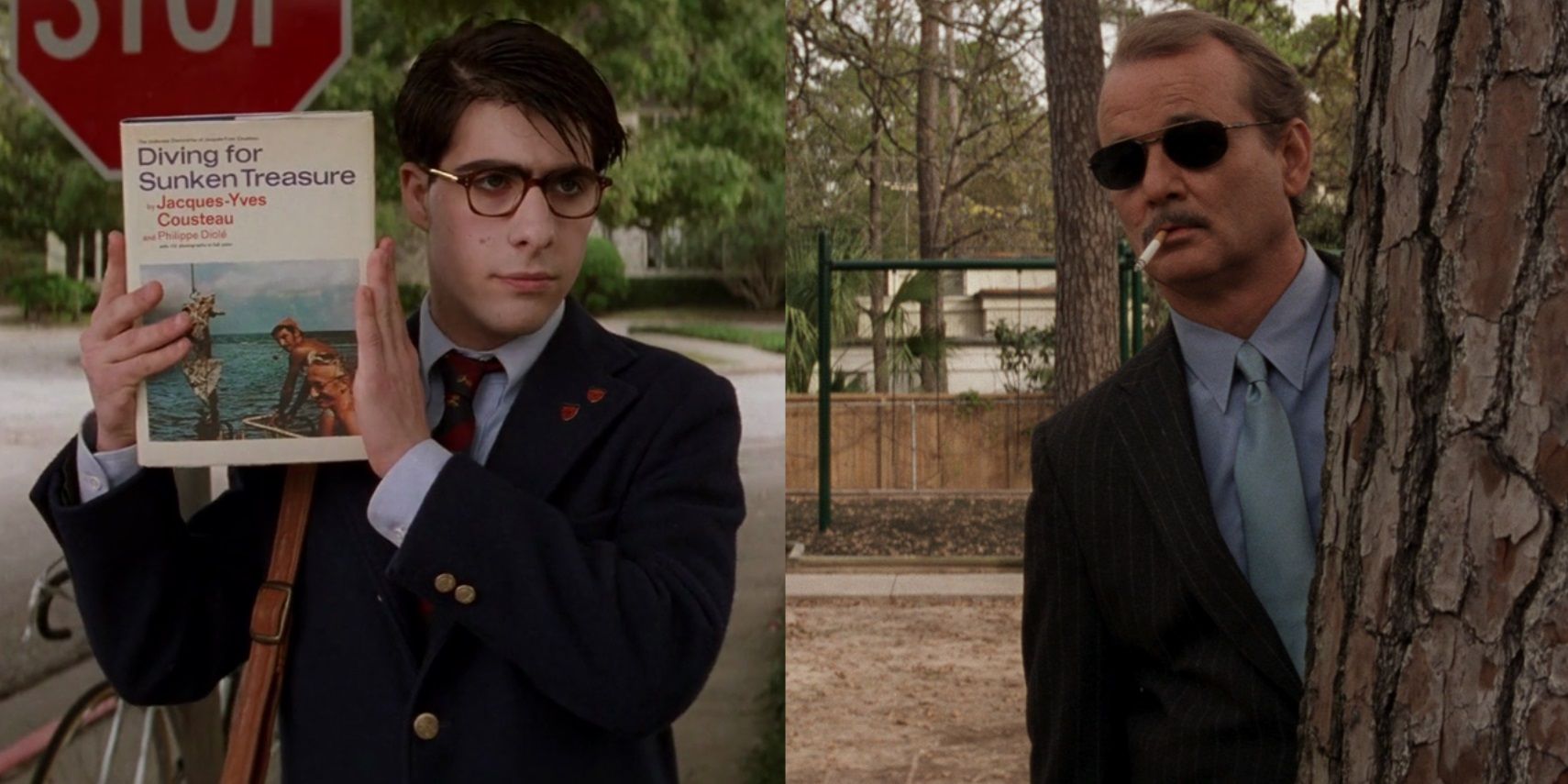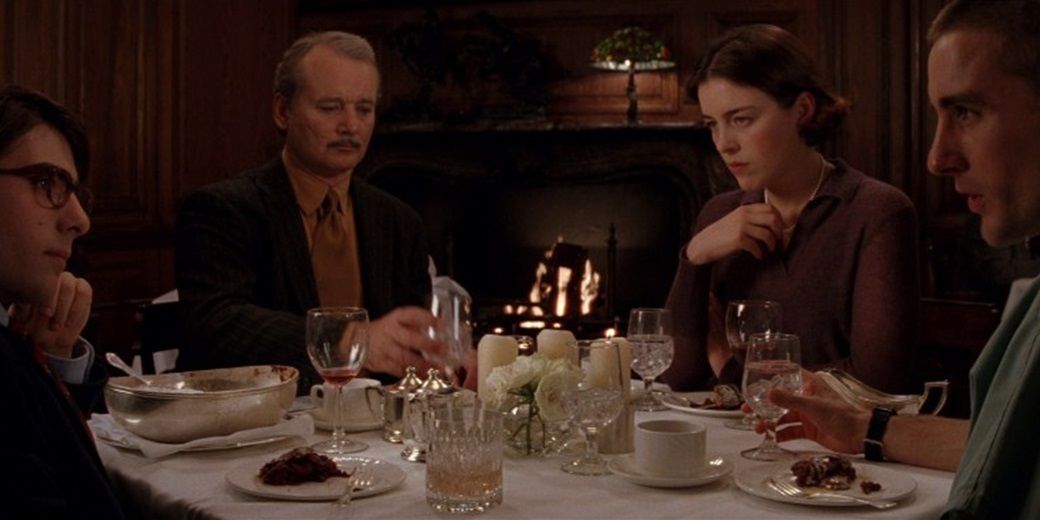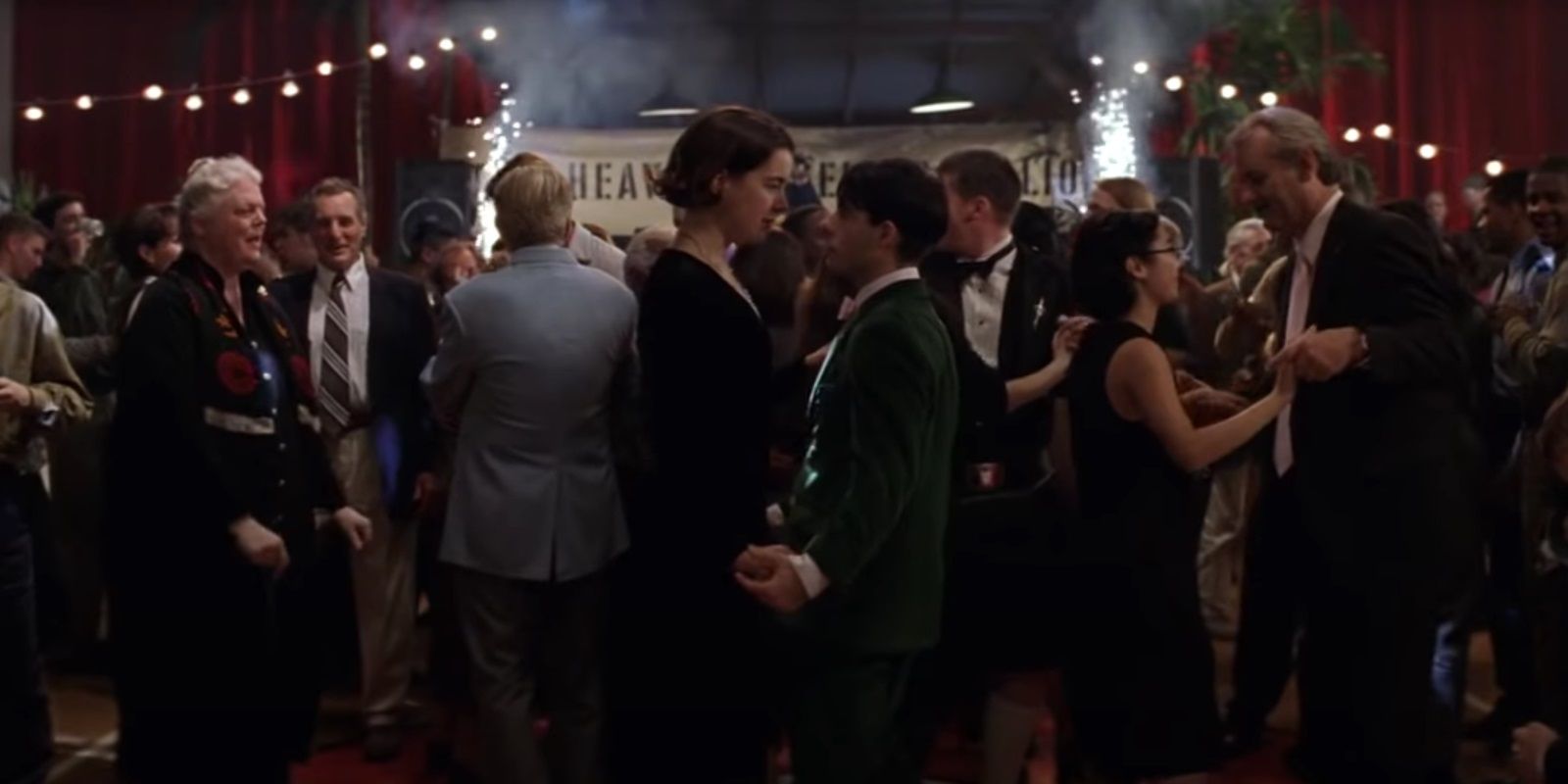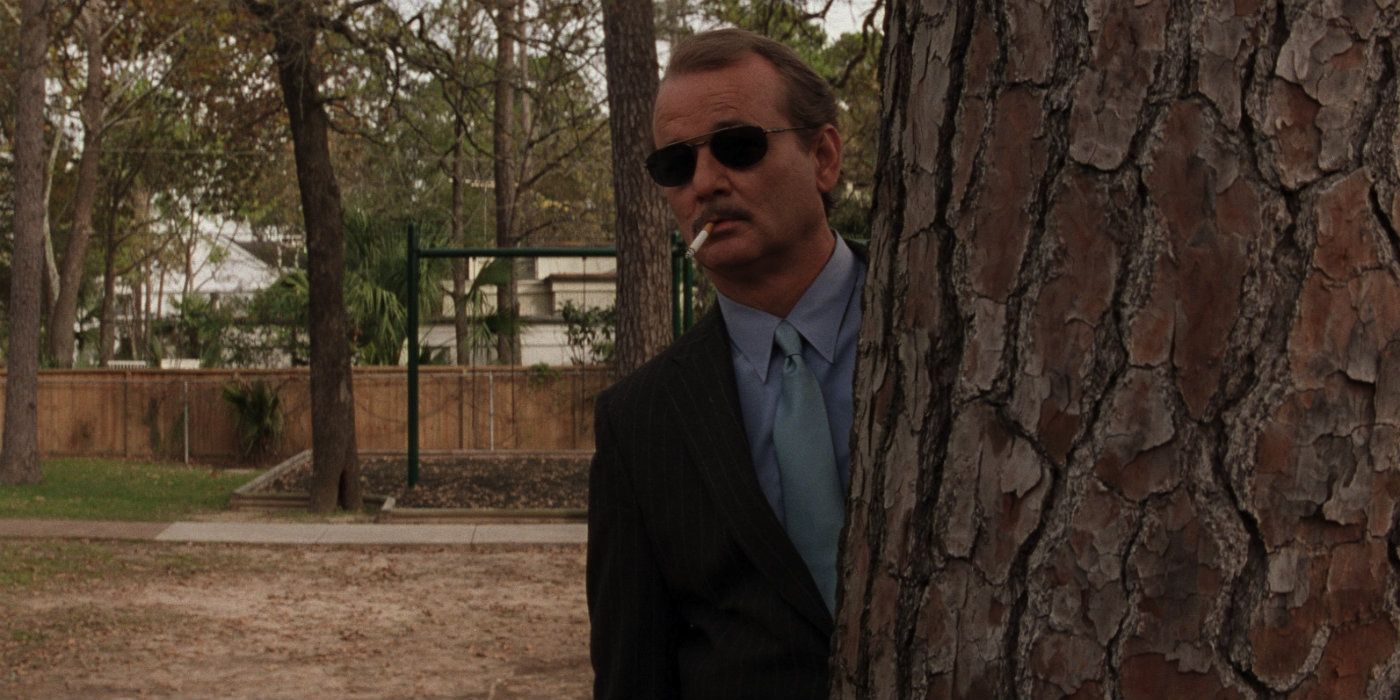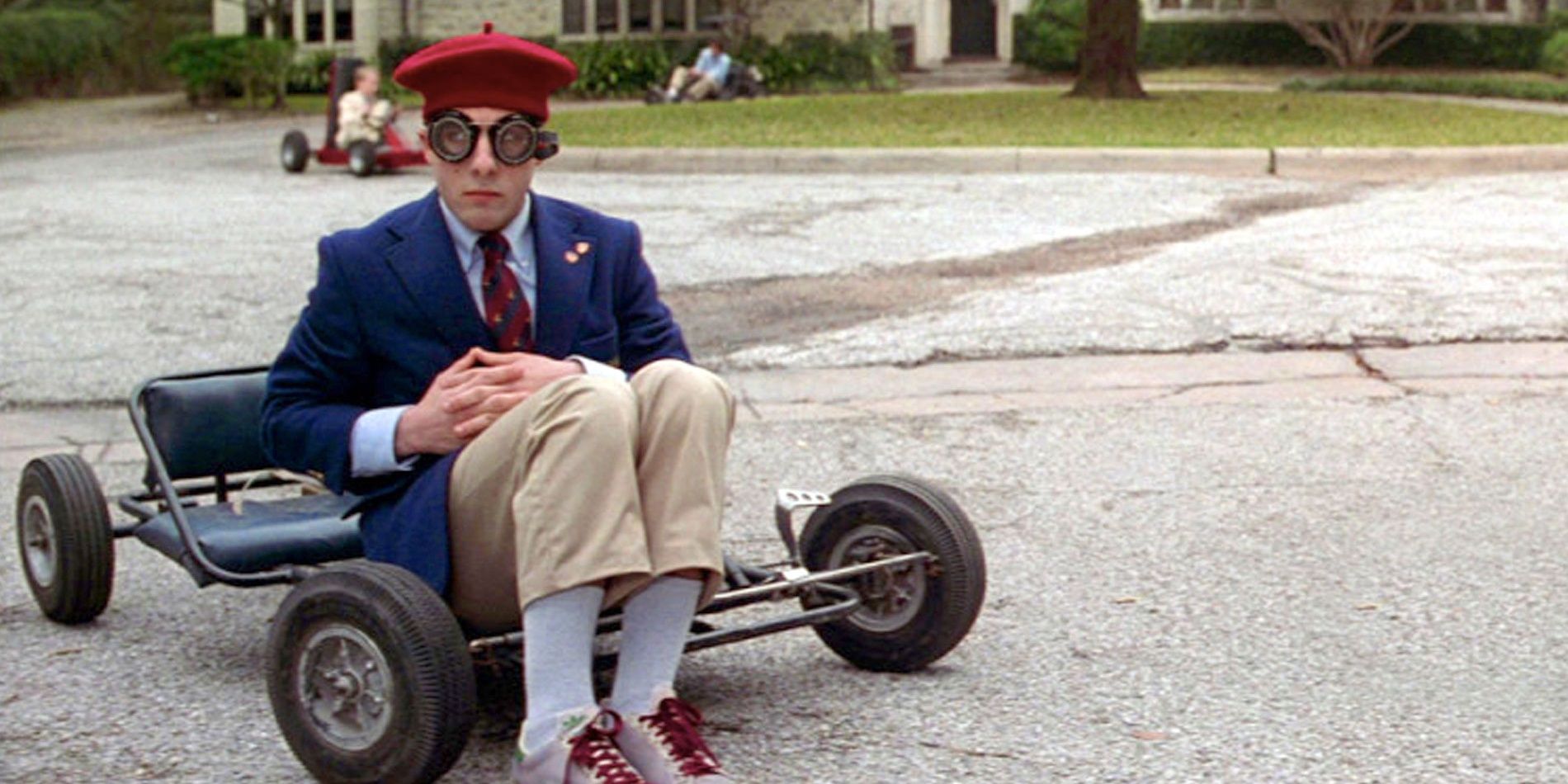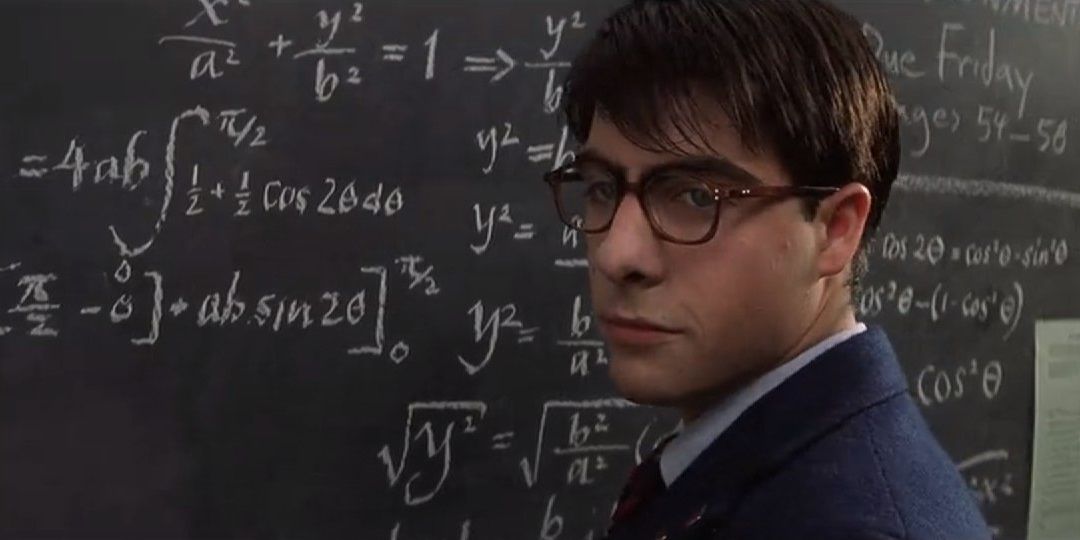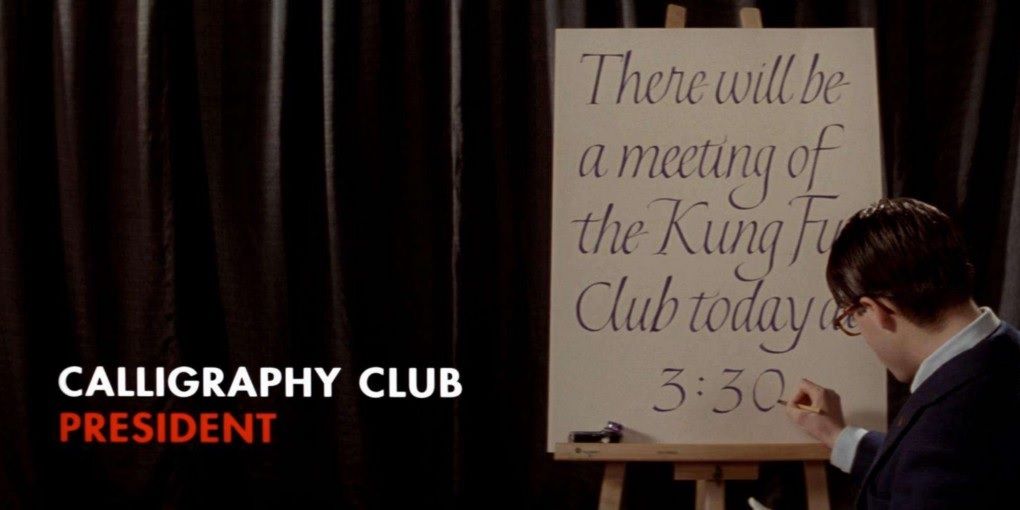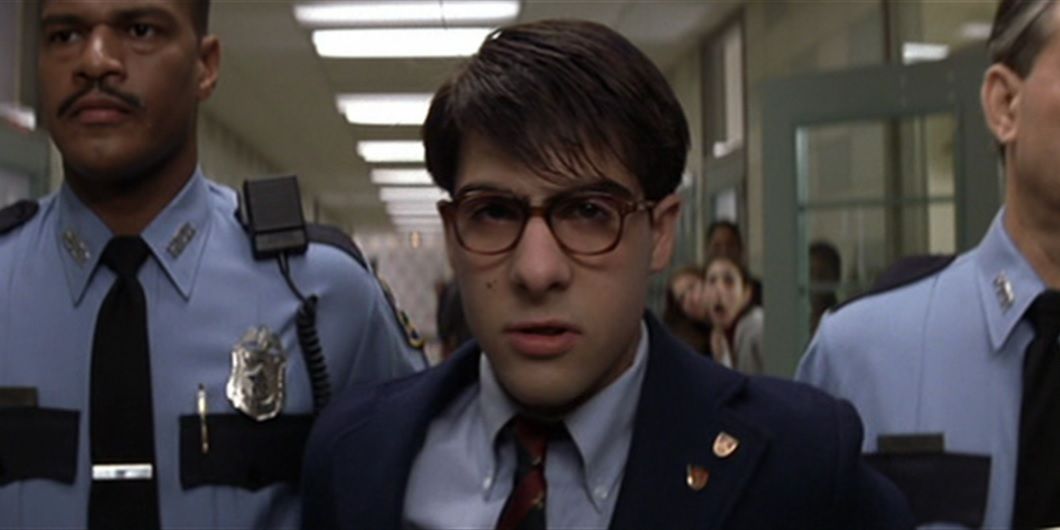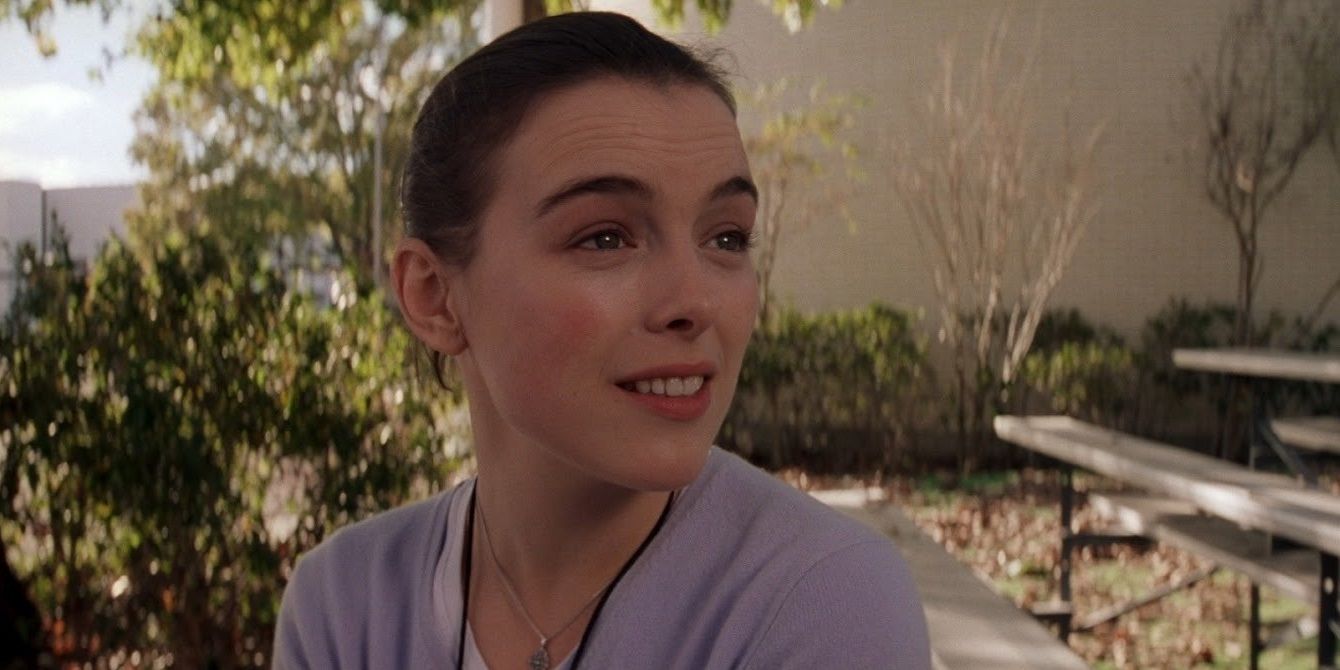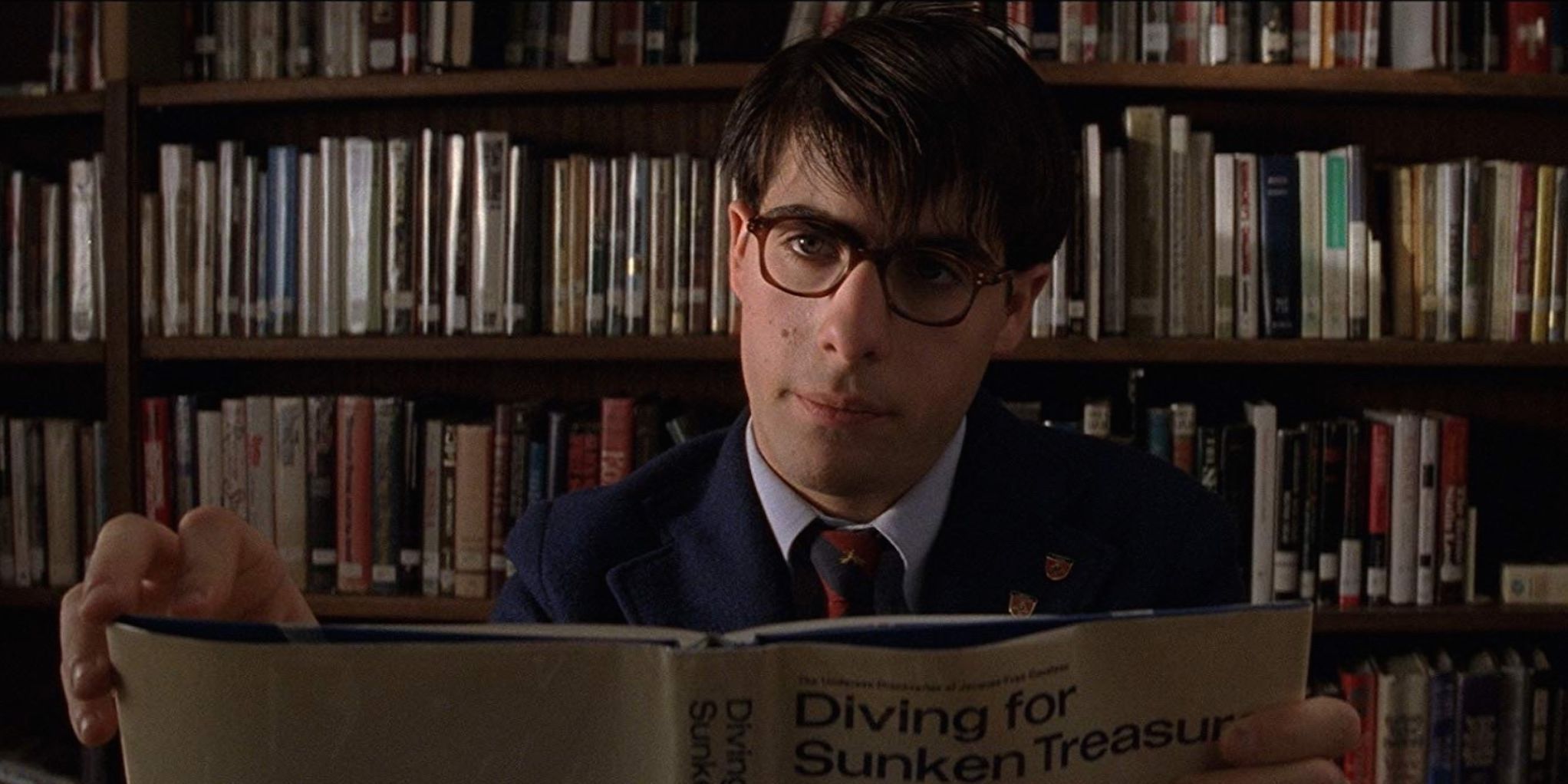Wes Anderson followed up his critically acclaimed but commercially disappointing debut feature, Bottle Rocket, with a similarly quirky comedy that similarly became a cult classic after a lackluster box office run. Rushmore is a deadpan coming-of-age gem about a precocious 15-year-old and his older industrialist friend who both fall in love with the same teacher at the titular private school.
All the now-familiar hallmarks of Anderson’s filmmaking – from slow motion to quirky costume design to needle-drops on the soundtrack – were already clear as day in his second feature.
Deadpan Humor
Anderson’s movies are tragicomedies that walk the fine line between hilarious and heartbreaking. Going back to Bottle Rocket, the humor of Anderson’s movies has always been delightfully deadpan.
In Rushmore, Jason Schwartzman brings a hysterically dry delivery style to lines like, “Your mind’s as warped as your ear.” Arguably the funniest example is when Miss Cross’ date says, “These are O.R. scrubs,” and Max obnoxiously quips back, “Oh, are they?”
Needle-Drops On The Soundtrack
Anderson often utilizes original scores – including in Rushmore – but he’s also renowned for dropping the needle on classic songs throughout his movies. The Darjeeling Limited has three Kinks songs, Fantastic Mr. Fox has three Beach Boys songs, and The Life Aquatic has a bunch of Portuguese-language Bowie covers.
The Rushmore soundtrack mostly utilizes hits from the “British Invasion” era of the ‘60s and ‘70s, featuring such artists as The Who, John Lennon, and the Rolling Stones.
Bill Murray
Owen Wilson is the actor most closely associated with Wes Anderson, because he worked with the director from the very beginning and he co-wrote his first few movies. But a close second is Bill Murray, whose deadpan delivery style and understated nuance are perfect for the Anderson cinematic universe.
Rushmore marked Anderson’s first collaboration with Murray, and the actor has appeared in all of Anderson’s films since. He’s played lead roles (Steve Zissou), smaller supporting roles (Raleigh St. Clair), and scene-stealing bit parts (the guy who misses the train in The Darjeeling Limited).
Quirky Costume Design
One of the most distinctive aspects of Anderson’s visual style is his use of quirky costume design. Chas, Ari, and Uzi Tenenbaum all wear matching red tracksuits. Steve Zissou and his crew all wear matching red beanies. Richie Tenenbaum hides his face behind a headband, a pair of sunglasses, and a beard.
There are plenty of iconic, idiosyncratic wardrobe choices in Rushmore. Max wears a red beret and a boatload of colorful vintage corduroy, while Herman wears Budweiser swimming trunks to a pool party.
Precocious Children
Precocious children can be found in many of Anderson’s films. Anthony’s little sister is smarter and more mature than he is in Bottle Rocket. Moonrise Kingdom’s Sam and Suzy are similarly wise beyond their years. The Royal Tenenbaums is all about what happens when child prodigies grow up and go through a collective mid-life crisis.
Considering it’s named after a prestigious academy for gifted children, Rushmore has a pretty high quotient of Andersonian precocious kids. Max Fischer is a 15-year-old who can negotiate with industrialists, write and direct a hit play, and plan the construction of an aquarium.
Futura
Although it hasn’t appeared in many of his more recent films, Futura used to be Anderson’s favorite font. It’s usually the typeface used for the opening credits and chapter titles in Anderson’s movies.
In Rushmore, Futura is used in all the captions detailing Max’s extracurricular endeavors. While the font itself can be seen in many of his films, Anderson often tampers with the line height, letter spacing, and text alignment from movie to movie.
Slow Motion
From Martin Scorsese to Zack Snyder, many auteurs include a lot of slow motion in their stylized visuals. It’s one of Anderson’s favorite visual tricks. Slow motion is deeply cinematic, especially when it’s paired with the perfect needle-drop.
There’s a ton of slow motion in Rushmore. Anderson shoots in slow motion when Max walks onto the stage to the real-time sound of thunderous applause at the end of his “hit play.” The final dance also plays in slow motion while the Faces hit “Ooh La La” plays at regular speed.
Grief
The tragic side of Anderson’s tragicomedy tends to manifest itself as grief. In The Darjeeling Limited, the brothers mourn the loss of their father. In The Life Aquatic, Steve mourns the loss of his best friend Esteban (and later his estranged son Ned). In The Royal Tenenbaums, Chas has become obsessed with his family’s safety in the months since his wife died in a plane crash.
In Rushmore, Max mourns the loss of his mother while Miss Cross mourns the loss of her husband. As Max bluntly points out, “I guess we both have dead people in our families.”
Love Triangle
Max, Herman, and Miss Cross make up the original Wes Anderson love triangle in Rushmore. Love triangles have since become a recurring plot point in Anderson’s films.
This trope can also be seen in Richie, Margot, and Eli’s dynamic in The Royal Tenenbaums and Steve, Ned, and Jane’s dynamic in The Life Aquatic. In each case, Anderson has used the suitor who loses out (Max, Richie, and Steve, respectively) to highlight the ugliness of jealousy.
Comically Unsympathetic Protagonist
There’s a general rule of thumb in screenwriting that the protagonist has to be likable so that the audience will root for them. But there are exceptions to this rule. Morally ambiguous antiheroes like Travis Bickle can be even more compelling than traditional protagonists, and in a comedic context, an unsympathetic jerk can sometimes get the biggest laughs.
Anderson has always had fun putting comically unlikable, unsympathetic characters like Max Fischer, Royal Tenenbaum, and Steve Zissou through the ringer.

